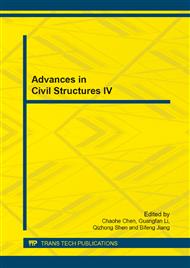p.717
p.723
p.727
p.732
p.736
p.741
p.745
p.751
p.757
A Kind of Swinging Bumper in the Rear of a Truck and its Performance Research
Abstract:
Using three-dimensional modeling software to design a kind of swinging rear underrun protective device, using the Ansys finite element analysis software, in accordance with the provisions of GB11567.2-2001, the rear underrun protective device applied static load analysis. The results show that the protective device and the body in the welding and bolt connecting two different cases, connected by bolts can effectively avoid the connection of stress concentration, and support as the main part of the force. But by welding, the connections exist obvious stress concentration, may to cause the protective frame dropping.
Info:
Periodical:
Pages:
736-740
Citation:
Online since:
July 2014
Authors:
Keywords:
Price:
Сopyright:
© 2014 Trans Tech Publications Ltd. All Rights Reserved
Share:
Citation:


